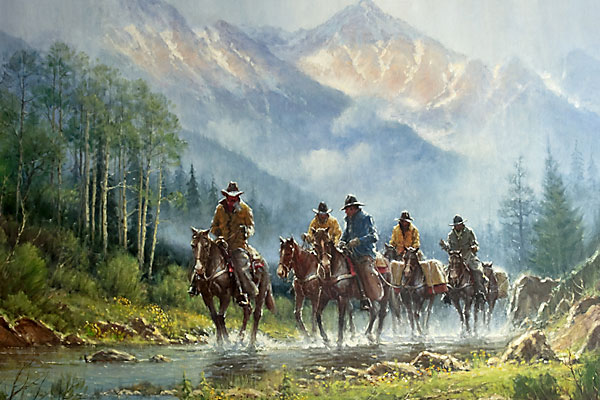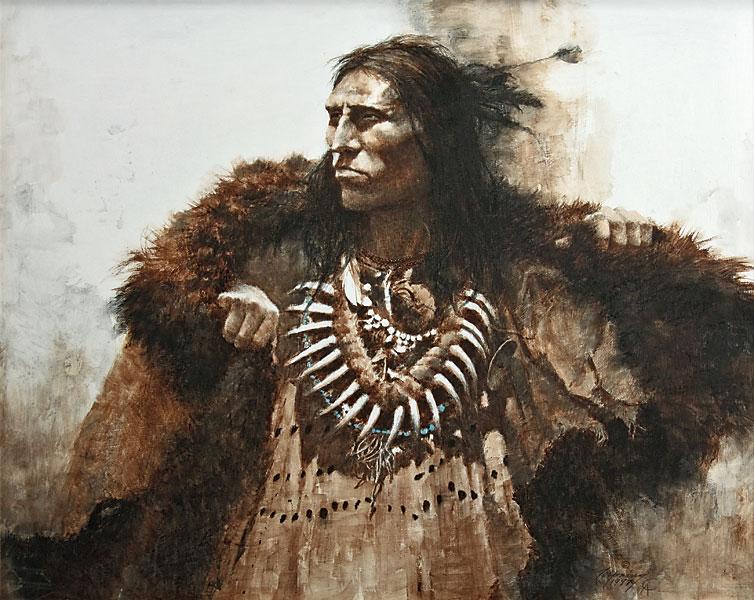
Frederic Remington’s bronzes took in most of the top Western art bids at Altermann’s auction on November 14, 2010, yet the bottom five of the top 10 lots were all works of the West by living artists.
Those top-selling artists are: G. Harvey of Fredericksburg, Texas, James Bama of Wapiti, Wyoming, Howard Terpning of Tucson, Arizona, Paul ?Calle of Stamford, Connecticut, and William H. Ahrendt of Pine, Arizona.
Works by three contemporary painters also set auction records for the artists. Angle of Pursuit by Ed Kucera of Highlands Ranch, Colorado, hammered in at $23,500. Paul Calle’s When Trails Go Cold sold for $85,000. And Ahrendt’s From the Missouri to the Big Horns set a record at $85,000. His oil on canvas, measuring 66 by 93 inches, was also the largest oil painting represented at the auction.
Ahrendt’s painting portrays the Fort Laramie Treaty of 1868. “The treaty is so important in history today,” the artist says, “it’s one of those things that has lingered on, and it still has not been settled.” To this day, the Sioux Nation is in litigation with the federal government for the return of the Black Hills in South Dakota, which were taken away from them once gold was found “in them hills” in 1874.
“To the Sioux people, gold meant nothing, but the sacred hills were sacred. It is the religious viewpoint against the profit motive. It goes to what we have today…the Muslim world sees the West as the invader of their religious rights, starting after the end of the first World War,” Ahrendt says. “We were not nation builders; we were interested in dividing up the land for profit. The oil is in conflict with the Muslim religious view. It’s an extrapolation of the treaty at Fort Laramie. It’s always religion against profit.”
His painting is in the representational style of the 16th- to 18th-century Baroque period, which Ahrendt studied while teaching painting at the Academy of Fine Arts in Munich, Germany, from 1957-68.
For him, the “real history of America is the crossroads of culture, of the people who moved west and developed the land. All that is a huge story with thousands of characters, all of whom find conflict with one another—the cultural shock of misunderstandings that went on,”?he says. “American Indians tried to get along with the people who occupied the land. It was a cultural clash that was largely unavoidable.”
Where that clash is most evident in his painting of the treaty is the sand map that the Sioux warriors are drawing of the hunting grounds that must remain theirs. General William Tecumseh Sherman holds a physical map, while, to his left, Gen. Alfred Terry fingers his beard in doubt. He knows the Sioux demands do not match the offer Washington is making.
Altermann’s auction hammered in at about $1.85 million.
Photo Gallery
George Custer and his expedition’s discovery of ore in the Black Hills set off a gold rush in the Dakota Territory in 1874. Two years later, Custer lost his life battling the Sioux at the Little Bighorn River. William Ahrendt’s From the Missouri to the Big Horns sold for an $85,000 bid.
–All images courtesy Altermann Galleries & Auctioneers–












